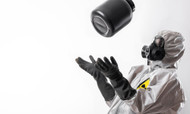The Different Types of VOCs You Should Avoid
Posted by William Kimmell on 17th Apr 2023
Volatile organic compounds (VOCs) are unstable chemical compounds, many of which scientists have linked to health problems. These health problems include a wide range of symptoms, from respiratory difficulties to cancer. Outdoors, VOCs disperse into the air and are less concentrated. But indoors, they can become dangerous. Learn the different types of VOCs you should avoid.
VOC Classifications
VOCs are a debated category. Regulatory bodies in the United States differ in their definitions and standards from other groups, like the European Union. The Environmental Protection Agency (EPA) uses the World Health Organization’s (WHO) system of classification to separate VOCs into three groups based on how easily they evaporate into the air. Below are the different types of VOCs you should avoid.
Semi-Volatile Organic Compounds (SVOCs)
SVOCs are organic compounds with some ability to evaporate into the air at room temperature. However, you will mostly find them contained in either solids or liquids. To be an SVOC, a compound must have a boiling range starting at 240–260 degrees Celsius and ending at 380–400 degrees Celsius. SVOCs include:
- DDT pesticides
- Chlordane
- Phthalates
- Fire retardants (PCBs)
Volatile Organic Compounds (VOCs)
Regular VOCs are compounds known to evaporate into the air under normal atmospheric conditions. They have a boiling point range from 50–100 to 240–260 degrees Celsius. Examples of VOCs include:
- Formaldehyde
- Toluene
- Acetone
- Ethanol
- Isopropyl alcohol
- Hexanal
Very Volatile Organic Compounds (VVOCs)
VVOCs are compounds that evaporate into normal, room temperature air very easily, making them a higher-than-average danger. They include things like propane, butane, and methyl chloride. VVOCs have the lowest boiling point range of all VOCs, from 0–50 to 100 degrees Celsius.
How To Protect Yourself From VOCs
VOCs may be everywhere, but you can take steps to protect yourself from them. First, never burn anything indoors in an unventilated area. Try to purchase products with ingredients that you recognize, since those are less likely to contain VOCs. If you purchase particle board furniture, let it air out in the garage before bringing it into your home.
Protecting the Workplace
If you’re concerned about VOCs in the workplace, you should consider investing in a photoionization detector. These devices can accurately detect VOCs in the atmosphere of a building, letting you know when levels get too high. You can find these detectors at TG Technical Services—we also carry gas detectors and PPE for workers to help keep your workplace safe.

